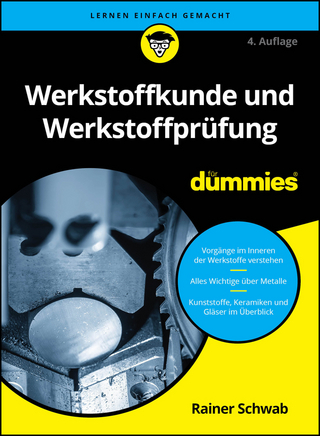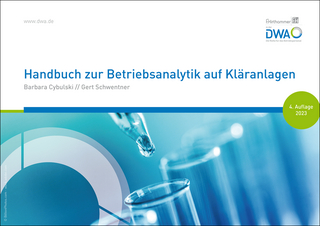
Exploring Computational Pharmaceutics
John Wiley & Sons Inc (Verlag)
978-1-119-98713-0 (ISBN)
Exploring Computational Pharmaceutics - AI and Modeling in Pharma 4.0 introduces a variety of current and emerging computational techniques for pharmaceutical research. Bringing together experts from academia, industry, and regulatory agencies, this edited volume also explores the current state, key challenges, and future outlook of computational pharmaceutics while encouraging development across all sectors of the field. Throughout the text, the authors discuss a wide range of essential topics, from molecular modeling and process simulation to intelligent manufacturing and quantitative pharmacology.
Building upon Exploring Computational Pharmaceutics - AI and Modeling in Pharma 4.0, this new edition provides a multi-scale perspective that reveals the physical, chemical, mathematical, and data-driven details of pre-formulation, formulation, process, and clinical studies, in addition to in vivo prediction in the human body and precision medicine in clinical settings. Detailed chapters address both conventional dosage forms and the application of computational technologies in advanced pharmaceutical research, such as dendrimer-based delivery systems, liposome and lipid membrane research, and inorganic nanoparticles.
A major contribution to the development and promotion of computational pharmaceutics, this important resource:
Discusses the development track, achievements, and prospects of computational pharmaceutics
Presents multidisciplinary research to help physicists, chemists, mathematicians, and computer scientists locate problems in the field of drug delivery
Covers a wide range of technologies, including complex formulations for water-insoluble drugs, protein/peptide formulations, nanomedicine, and gene delivery systems
Focuses on the application of cutting-edge computational technologies and intelligent manufacturing of emerging pharmaceutical technologies
Includes a systematic overview of computational pharmaceutics and Pharma 4.0 to assist non-specialist readers
Covering introductory, advanced, and specialist topics, Exploring Computational Pharmaceutics - AI and Modeling in Pharma 4.0 is an invaluable resource for computational chemists, computational analysts, pharmaceutical chemists, process engineers, process managers, and pharmacologists, as well as computer scientists, medicinal chemists, clinical pharmacists, material scientists, and nanotechnology specialists working in the field.
Edited by Dr. Defang Ouyang is Associate Professor, Institute of Chinese Medical Sciences and Faculty of Health Sciences, University of Macau. With more than twenty years of experience in academia and industry, Dr. Ouyang has pioneered the integration of multi-scale modeling, Artificial Intelligence, and Big Data techniques in the field of drug delivery. He developed six approved patents and published two books, several book chapters, and over 100 refereed journal papers.
List of Contributors xv
Preface xxi
1 Introduction to Computational Pharmaceutics 1
Nannan Wang, Wei Wang, Hao Zhong, and Defang Ouyang
1.1 Current Pharmaceutical Research 2
1.2 What is Computational Pharmaceutics? 5
1.3 About This Book 7
2 Opportunities and Challenges of Artificial Intelligence (AI) in Drug Delivery 10
Zhuyifan Ye and Defang Ouyang
2.1 Introduction 12
2.2 Machine Learning Algorithms 14
2.3 Applications of Machine Learning in Pharmaceutics 22
2.4 Applications of Large-Scale Models in Drug Discovery and Development 40
2.5 AI in the Clinic and Precision Medicine 44
2.6 Opportunities and Challenges 45
2.7 Summary 48
3 Computational Resources in Pharmaceutics 59
Jie Dong
3.1 Concept and Overview of Computational Pharmaceutics 60
3.2 Databases 62
3.3 Computational Platforms/Web Servers 67
3.4 Implementation Methods for Databases and Computing Platforms 79
3.5 Summary and Outlook 81
4 Computational Modeling of Dry Powder Inhalation 85
Jiawei Hu, Ling Zhang, and Chuan-Yu Wu
4.1 Introduction 86
4.2 Discrete Element Methods (DEMs) 87
4.3 Modeling of Agglomeration 89
4.4 Modeling of De-agglomeration 91
4.5 Modeling of Particle Dispersion in DPIs 95
4.6 Summary and Perspectives 98
5 Molecular Modeling in Drug Delivery: Polymer Protective Coatings as Case Study 104
Alex Bunker and Josef Kehrein
5.1 Introduction 107
5.2 Molecular Dynamics Simulation of Polymers in Drug Delivery 125
5.3 Conclusion 163
6 3D Structural Investigation of Solid Dosage Forms 199
Xianzhen Yin, Chenxi Huang, Zeying Cao, Li Wu, Tiqiao Xiao, Peter York, and Jiwen Zhang
6.1 Structure of Solid Dosage Forms and Methods of Investigation -- An Overview 200
6.2 Synchrotron Radiation X-ray Computed Microtomography 204
6.3 3D Structure Reconstruction Based on SR-μCT 205
6.4 3D Visualization and Quantitative Characterization 210
6.5 Future Prospects 229
7 Dissolution Mechanism of Pharmaceuticals and Formulations by Nonequilibrium Thermodynamic Modeling 235
Yuanhui Ji, Zheng Zhang, Kai Ge, Raphael Paus, and Gabriele Sadowski
7.1 Introduction 236
7.2 Theoretical Basis and Models 238
7.3 Experimental Methods 244
7.4 Mechanism Analysis and Model Predictions 246
7.5 Conclusions and Outlook 261
8 Physiologically Based Pharmacokinetics 267
Ruihu Du and Dongyang Liu
8.1 Definition and History of Physiologically Based Pharmacokinetics 268
8.2 Principles and Structures of the Physiologically Based Pharmacokinetics Model 269
8.3 Physiologically Based Pharmacokinetics Model in Complex Situations 284
8.4 Challenges and Perspectives of the Physiologically Based Pharmacokinetics Model 288
9 Molecular Modeling in Drug Delivery 293
Jiawen Wang, Yi Yu, and Youyong Li
9.1 Introduction 294
9.2 Basic Principles of Molecular Dynamic Simulation and Molecular Modeling Methods 300
9.3 Molecular Dynamic Simulation of Drug Delivery Strategies with Nanoparticles 303
9.4 Summary 320
10 Integration of Dendrimer-Based Delivery Technologies with Computational Pharmaceutics and Their Potential in the Era of Nanomedicine 328
Karnaker Reddy Tupally, Prasenjit Seal, Preeti Pandey, Rink-Jan Lohman, Sean Smith, Defang Ouyang, and Haredra Parekh
10.1 Introduction 329
10.2 Dendrimers as Drug/Gene Delivery Systems and Their Pharmaceutical Applications 331
10.3 Computational Aspects of Dendrimer-Based Drug Delivery and Challenges 363
10.4 Conclusions 367
11 Artificial Intelligence and Computational Modeling in Orally Inhaled Drugs 379
Renjie Li, Hao Miao, Xudong Zhou, Ruiping Zou, and Zhenbo Tong
11.1 Overview 381
11.2 Chronic Respiratory Diseases and Inhaled Therapy 381
11.3 Introduction of Computational Methods 383
11.4 Applications in R&D of Inhalers and Drug Formulations 386
11.5 Applications in the Evaluation of Inhaled Drug Efficacy 389
11.6 Applications in the Management of Chronic Respiratory Diseases 394
11.7 Challenges and Future 397
11.8 Conclusions 399
12 Digital Formulation Development Using 3D Printing Technology: AI and Modeling 408
Timothy Tracy, Lei Wu, Senping Cheng, and Xiaoling Li
12.1 Introduction 409
12.2 3D Printing Methods in the Formulation of Pharmaceuticals 411
12.3 Novel Tablet Structures Possible with 3D Printing 415
12.4 Artificial Intelligence in Formulation Development Using 3D Printing 416
12.5 3D Printing Formulation by Design 430
12.6 Summary 432
13 A Review on Research and Application of Expert Systems on Drug Formulation and Process Design 437
Ruofei Du and Yu Zhang
13.1 Introduction 437
13.2 The Structure of ES 438
13.3 Applications 449
13.4 Discussions 466
14 Application of PBPK Modeling in Formulation Development 474
Bo Liu and Xue Li
14.1 Introduction 475
14.2 Pharmacokinetic (PK) Software for Modeling 476
14.3 Modeling Mechanisms for Different Types of Dosage Forms 479
14.4 Summary and Conclusion 489
15 Multiscale Models for Tablet Manufacturing Process Development 493
Xizhong Chen, Kai Liu, LiGe Wang, Liang Li, and Zheng-Hong Luo
15.1 Introduction 494
15.2 Tablet Manufacturing 496
15.3 Computational Modeling 499
15.4 Case Studies 506
15.5 Summary and Outlook 513
16 Machine Learning as a Part of Pharmaceutical Product Development 517
Johan Botker, Jukka Rantanen, and Anders O. Madsen
16.1 Introduction 518
16.2 Pharmaceutical Materials Science 519
16.3 Product Design 524
16.4 Processing of Pharmaceuticals 526
16.5 Analytical Chemistry in a Pharmaceutical Setting 529
16.6 Concluding Remarks 530
17 Big Data Analysis of Patents and Their Applications in Biomedical Research and Development 533
Jiaqi Xu, Jialu Yuan, Hong Cai, and Yuanjia Hu
17.1 Introduction 534
17.2 Patent Landscape Analysis 536
17.3 Mining Chemical Information from Patents 540
17.4 Mining Biological Information from Patents 546
17.5 Mining Pharmaceutics Information from Patents 553
17.6 Practical Operations and Related Issues 556
17.7 Outlook 568
18 Model-informed Drug Development (MIDD) Regarding Regulatory Requirements and Thinking 574
Wei Wang, Yuzhu Wang, and Defang Ouyang
18.1 Driving Forces Toward MIDD 576
18.2 Regulatory Guidance on Modeling Methods 578
18.3 Evolving Thinking on MIDD 582
18.4 The Advancement of Pharmacometrics in China 588
18.5 Summary 589
References 589
Index 593
| Erscheinungsdatum | 21.08.2024 |
|---|---|
| Reihe/Serie | Advances in Pharmaceutical Technology |
| Verlagsort | New York |
| Sprache | englisch |
| Maße | 177 x 251 mm |
| Gewicht | 1332 g |
| Themenwelt | Naturwissenschaften ► Chemie |
| ISBN-10 | 1-119-98713-X / 111998713X |
| ISBN-13 | 978-1-119-98713-0 / 9781119987130 |
| Zustand | Neuware |
| Haben Sie eine Frage zum Produkt? |
aus dem Bereich


